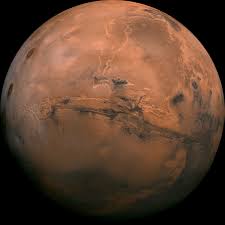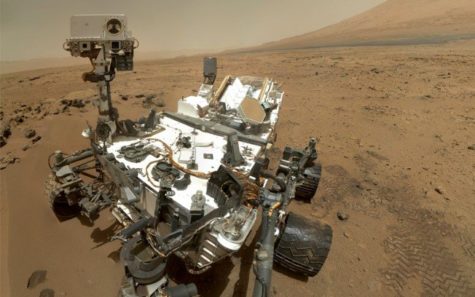Mars: The next steps

March 23, 2017
Imagine a place where we start from scratch. Not only will humanity have a fresh start, but we will further enhance our understanding of Mars and its past. In the next few decades, space programs like SpaceX and NASA will be developing the technology to achieve this goal. There are many problems we must solve and many risks we must take.
In the 2030s, NASA is planning to send astronauts on a yearlong mission to Mars to determine the composition of its atmosphere and habitability, which will greatly assist scientists in determining the probability of there being life. We are much closer than we think to discovering and colonizing a whole new planet, which will be a huge step forward for our society. As space programs around the world continue to develop the technology towards achieving this goal, our long-awaited journey to Mars will draw nearer to us as we further our understanding of how exactly to get there.
NASA, in fact, and many other space agencies, have devised a three-stage plan to ease our way into the process of getting to Mars. The three stages are Earth reliant, proving ground, and Earth independent. This plan separates and organizes tasks we must accomplish based on their complication and the money or technology it will require. The Earth reliant stage consists of tasks and information that can be completed and discovered here on Earth or in low Earth orbit. Proving ground are tasks that pull away from Earth, and require us to go to places like the moon, increasing our distance from Earth. Lastly, the Earth independent section is when we finally send humans to low-Mars orbit in the early 2030s. From this three-step plan, we are prepared to jump over the bumps that lie in the road ahead, which will lead us to the exploration of Mars.
We have made a great deal of progress in exploring Mars. Scientists and astrobiologists have already determined that the six elements necessary for life, carbon, hydrogen, nitrogen, oxygen, phosphorous and sulfur, are present on Mars. This was a breakthrough for our understanding of Mars’s habitability. In addition, NASA has found deep, downhill slopes, and “The detection of hydrated salts on these slopes means that water plays a vital role in formation of these streaks.”
Many people believe the martian surface to be a bland, red desert. This, however, is not true in all places, and is far from being bland. Since the early 70s, humans have been sending rovers to the surface of the red planet to study the surface and the qualities of the foreign planet. Incredibly, it has the highest mountain and deepest canyon in the solar system, Olympus Mons and Valles Marineris, respectively. These bold steps made by large space organizations have led us ever closer to getting to the martian surface. Many experiments have been performed to give us a better understanding of the safety issues we will be putting our astronauts through when they arrive. The Curiosity Rover, as an example, has gathered radiation data. This is very important to know, since it can affect someone’s health on the surface immensely.

Currently, NASA is conducting various missions and doing many things to further our understanding of Mars. For example, astronauts in the orbiting laboratory are helping NASA deduce what technologies and communication systems are necessary for our journey to Mars. In addition, NASA is constantly working hard on new technologies like the Orion Spacecraft and Space Launch System, which are needed to send astronauts into deep space. The Orion Spacecraft will launch on the most powerful rocket in the world and will fly farther than any spacecraft ever before. This spacecraft will position its solar arrays and the Space Launch System upper stage, called the Interim Cryogenic Propulsion Stage, that will give it the boost it needs to break away from Earth’s orbit and travel towards the moon.
NASA is planning on conducting various missions and creating the technology needed for our long-awaited journey to Mars in the future. For example, in the 2020s, NASA is going to send a robotic mission to capture a certain asteroid and redirect it to orbit the moon. Astronauts around various spacecrafts are planning to explore and dissect the asteroid and bring back core samples to Earth. This kind of experience in spaceflight will assist NASA in testing new technological systems and capabilities, such as the Solar Electric Propulsion. The Solar Electric Propulsion is needed by NASA to send cargo to astronauts in space while on their missions. In addition, the Mars Curiosity rover has gathered and measured radiation levels on the way to Mars and sent that information back to Earth, which will help in protecting astronauts from this danger on their way to Mars. More robotic spacecrafts are planned to be sent to Mars to help NASA gain more information about the planet and create more technological developments.
Jeff Stern, a parent at the NYC iSchool, lists more of the challenges we must overcome in our journey to Mars and what risks we currently face. According to him, “We need a rocket ship that is capable of making the trip to Mars in much less time, because physiologically, humans cannot survive in space for the approximate 12-month journey it would take to travel there with our current technology.” When asked about the important things humans should study when first sent to Mars, he responded, “We obviously have to study whether the conditions on Mars would allow us to establish colonies there, and further study the composition of its atmosphere.” Stern also states that we would have to overcome “One of the most dangerous risks of immense radiation levels in space, and the fact that crew members on the journey to Mars may never return.” Although he questions the hypothesis of humans being sent to Mars as early as the 2030s, he knows that we have made a great deal of progress.
There are many reasons why we want to go to Mars that lead all the way down to the very nature of humanity. The urge to know what’s over the wall. Is there danger that lies behind it, or great treasures beyond our imaginations? But there are other causes for us to go to Mars. The climate is changing rapidly. It is getting to a point of no return. Earth is currently in one of the biggest mass extinction events in the planet’s 4.5 billion year history. Temperatures and ocean levels are rising, but isn’t from some meteorite or drought. It is from us. The very ones who inhabit this Earth and call it home. Unfortunately, we have to acknowledge the fact that the conditions of the climate may become so severe we must resort to elsewhere. Mars is the closest and best place we know of to supply us with this need. Once we terraform the planet and give it an atmosphere, it will essentially be a smaller Earth, a third of its size.
Peter Eichenbaum, a parent of NYC iSchool, shares his views on the advantages of going to a new planet. “I think it will probably save the human race. We’ll have another planet to live on before we destroy this one”. When asked if he believes Earth is guaranteed to be destroyed by humans, he replies, “I do not think it’s a guarantee, but I think it’s an insurance policy.” Eichenbaum states another advantage that could be beneficial of colonizing Mars: “Maybe you colonize Mars and then you use that as a jumping off point to the next step, further away.”
The mission to Mars in the next few decades will not be a simple and easy ride, but it will be immensely beneficial to humanity for all to come after us. We are creating a better world for those in the future, and we are doing what we were meant to do all along. Discover the unknown until we can no longer do so. Create, innovate, and use our gift of intelligence and life to progress our species on a path of extraordinary things. Mars is one small step for man, and one giant leap for the future of space exploration.



